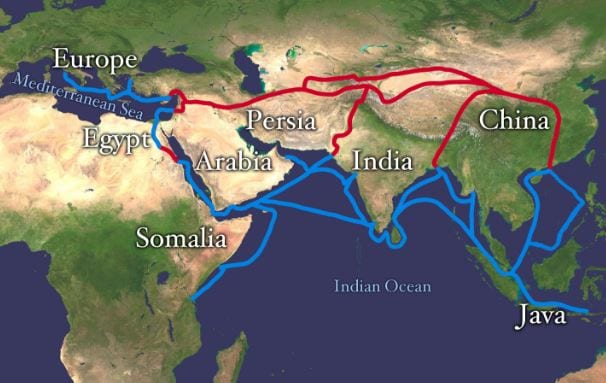
Report by CSIS on China Belt
By Tom McGregor, CNTV Commentator
The headquarters of the think tank, Center for Strategic & International Studies, is located on Rhode Island Ave. in Washington D.C., costing more than $100 million to build it. Wealthy donors have given hundreds of millions of dollars more to CSIS since its founding in the 1960s.
According to the University of Pennsylvania’s 2013 Global Go To Think Tanks Report, CSIS is ranked as number one in the world for security and international affairs, 4th overall in the world and “one of the most respected of Washington’s think tanks.”
Compelling Read: How Will Gold fare in a negative interest environment
With such an illustrious background and a megadollar budget to fund research papers, you might think its 44-paged report on the Chinese President’s Belt & Road Initiative, authored by former CIA (Central Intelligence Agency) operative Charles Johnson, which was published last month, would provide readers with incredible insights, shocking new information and a blueprint on how Beijing would move forward on the New Silk Road.
Reading copy-and-paste research and analysis
However, you will be disappointed if you have set such high expectations before reading the report, sponsored by the CSIS Freeman Chair in China. No background analysis has not already been mentioned in the public sphere.
A reader gets the feeling the author simply logged on to the Google search engine, typed, “Xi Jinping One Belt, One Road”, and wrote his study on related excerpts while assuming the Chinese government has ulterior motives for embarking on the New Silk Road.
Nearly half the report does not mention the Belt & Road but goes in different directions, such as disclosing China’s military modernization and foreign policy strategies unrelated to the initiative.
Singing the China Threat siren
The Western media and Washington D.C.-based think tanks have grown accustomed to hailing the so-called ‘China Threat’ theory.
The CSIS calls for more US interference in the New Silk Road project. Johnson wrote twice in his report: “The new United States administration that takes office in January 2017 would be well served in thinking about new approaches and manage a process that, if President Xi Jinping gets his way, will be a force to be reckoned with for the next decade and beyond.”
In the minds of CSIS, the Belt & Road does not deserve to succeed unless the US will “manage” the global initiative. For CSIS, the New Silk Road is not about upgrading logistics, telecommunications, and infrastructure to boost cross-border trade and investments in Asia, the Middle East, Eurasia, Africa and Europe.
CSIS views Beijing’s economic diplomacy as scheming rather than acting as “mutually beneficial, seeking win-win cooperation for a common destiny.”
Asia needs more infrastructure
Countries in Asia have continued to enjoy rapid economic growth, and meanwhile, there’s strong demand “for modern roads, railways, ports, electricity.” according to CSIS. “Telecommunications and other kinds of basic infrastructure are set to create sustained long-term demand for substantial investment.”
By engaging in more cooperation with Beijing on the Belt & Road initiative, the US can play its part too, but so long as it does not intend to interfere maliciously.
Other Stories of Interest:
Negative rates are fantastic for speculators but terrible for the global economy (April 16)
Electric Vehicles set to wreak havoc on Crude oil market (April 13)
Negative Rates are God sent for the Greedy, the unscrupulous corporate world (13 April)
Oops, we are doing it again; the Subprime Auto Loan Crisis party has begun (12 April)
Federal Reserve’s Game plan; create a new class of slaves (12 April)
Netherlands to Ban Gasoline-Powered Cars
Dow Jones Industrial Average Today: Is It Set To Crash


